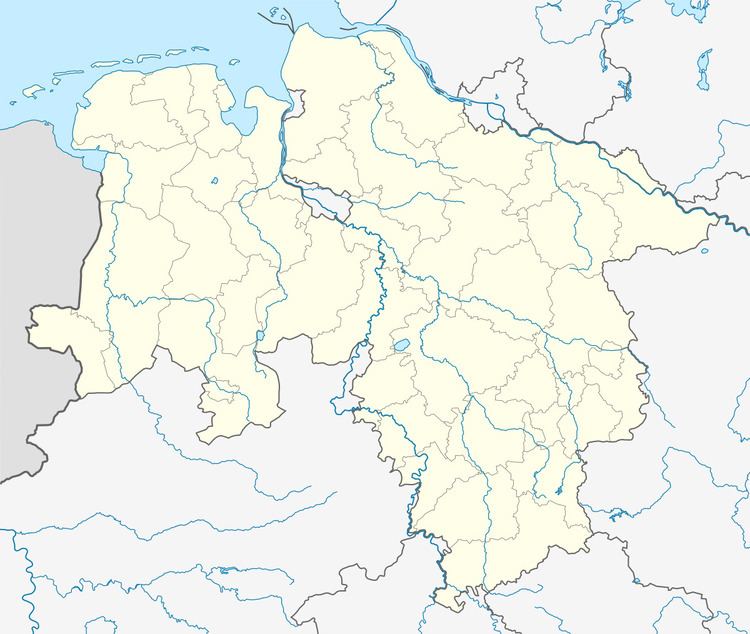 | ||
Bergen-Hohne Garrison was a major British garrison in the post-Cold War period, with facilities located close to Bergen at Lager Hohne, at Lager Oerbke near Fallingbostel and at Celle in Lower Saxony, Germany. It was home to 7th Armoured Brigade and most of its subordinate units. It formed a major part of British Forces Germany.
Contents
History
The oldest part of the garrison was Heide Kaserne (named after the Lüneburg Heide nature reserve) at Celle, a huge red-brick edifice which dates back to 1869 and which became Taunton Barracks after the Second World War. Also at Celle Station, Seeckt Kaserne (named after General Hans von Seeckt) was built in 1935 and became Trenchard Barracks after the War. Meanwhile, just to the north of Celle, Freiherr von Fritsch Kaserne (named after General Werner von Fritsch) was built as a Luftwaffe supply base in the 1930s and became Ironside Barracks after the War. Much of the rest of the garrison was created by the British Army, shortly after the War, by re-furbishing two training and transit camps (Lager Hohne and Lager Oerbke near Fallingbostel) which had been established by the Wehrmacht just before the War.
During the Cold War, two separate brigades occupied the bases that later became Bergen-Hohne Garrison: Fallingbostel, Wolfenbüttel and Celle housed elements of 7th Armoured Brigade, whilst its headquarters, signal squadron (207 Signal Squadron) and ordnance company were based in Soltau. Hohne was home to the 22nd Armoured Brigade. Both brigades were part of the 1st Armoured Division, which also included 12th Armoured Brigade (headquartered at Osnabrück) and had its divisional headquarters and signal regiment in Verden on the River Aller.
Some 4,000-5,000 British soldiers occupied the garrison until it closed in 2015. Facilities under the garrison's control included the Bergen-Hohne Training Area. Together with families and civilians the garrison population varied between about 10,000 and 12,000.
Locations
Locations within the garrison area included:
Hohne Station:
The garrison also had quarters and facilities for the families of British forces stationed here including three Service Children's Education schools – Gloucester Secondary School, Montgomery Primary School and Slim Primary School. The station amenities include two swimming pools, beauty and hair salons, medical and dental centres and several shops selling goods from sports equipment, art and crafts, telephones and furniture. The Roberts Roundhouse building located in the garrison was used as a ballroom, then as a hospital and finally as a social gathering area. It was located next to the NAAFI shop.
Fallingbostel Station:
Celle Station:
Garrison command
Officially, the responsibility for Bergen-Hohne Garrison was held by Commander 7th Armoured Brigade. In practice, the day-to-day running of the garrison, however, was delegated to the Deputy Garrison Commander in order to enable the brigade commander to concentrate on training his brigade and deploying with it on overseas operations e.g. to Iraq and Afghanistan. The Deputy Garrison Commander had a staff of, mainly non-deployable, officers and soldiers, UK civil servants and locally-employed civilians who managed and supported the garrison, its infrastructure and its families. Deputy Garrison Commanders included:
